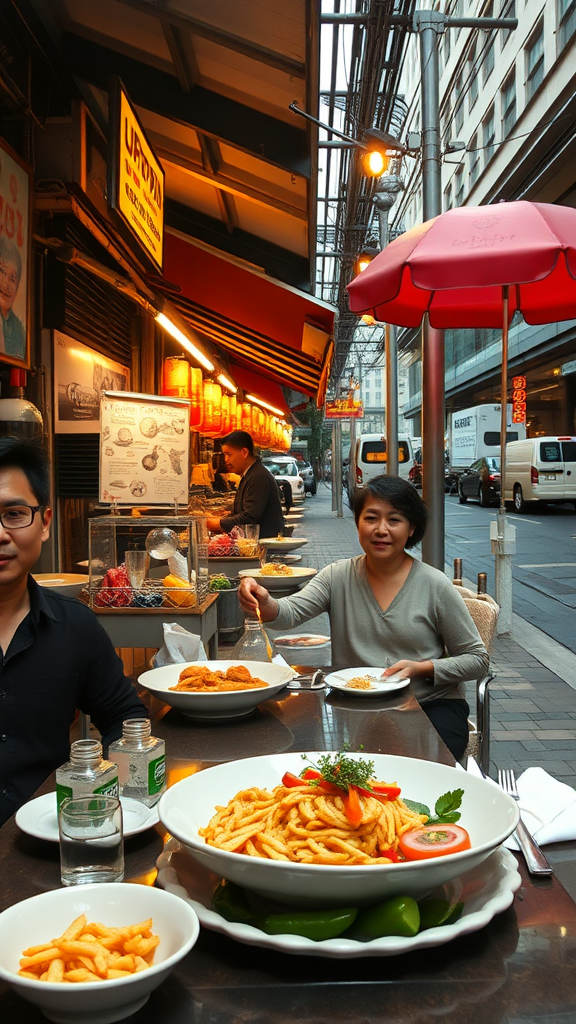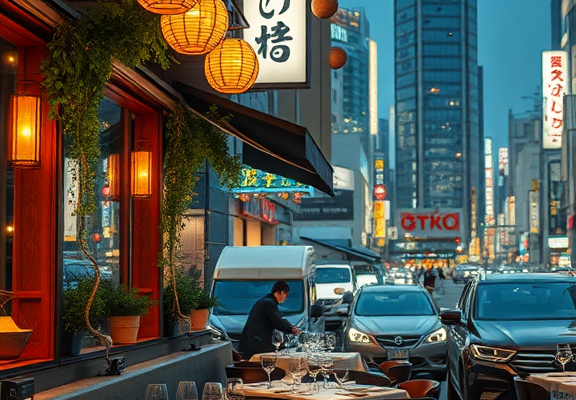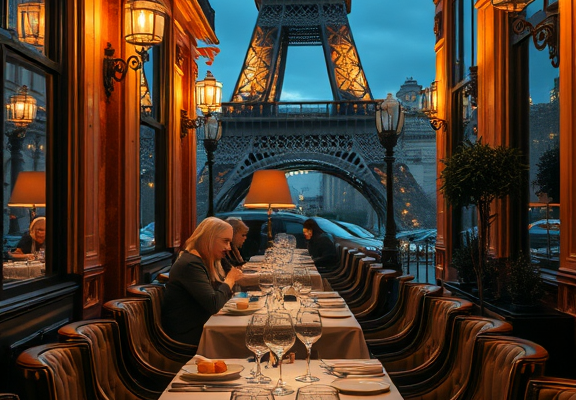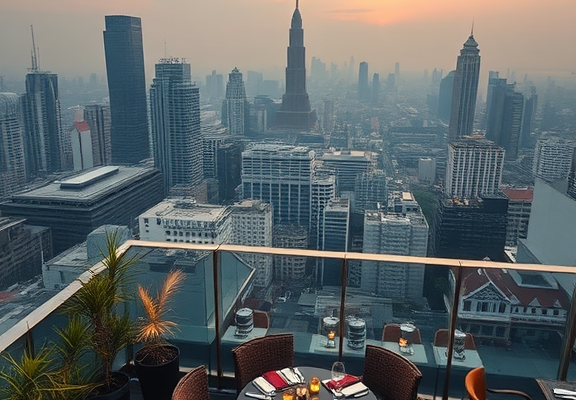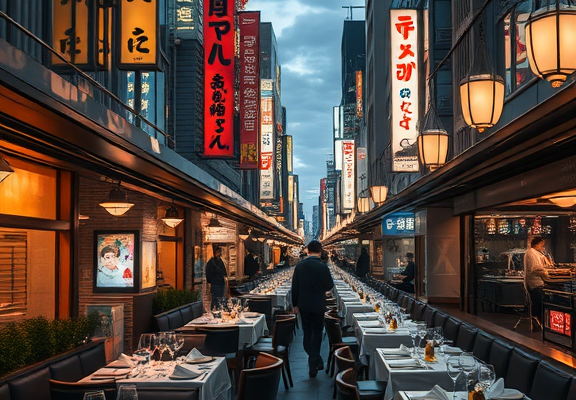The Cultural Significance of Street Food vs. Fine Dining in Singapore
In Singapore, the culinary scene tells a vibrant story through the contrast of street food and fine dining. Each offers a unique glimpse into the country’s rich culture and history, catering to different tastes while playing significant roles in its social fabric.
Thank you for reading this post, don't forget to subscribe!Street food in Singapore is not simply about convenience; it mirrors the nation’s multicultural heritage. You can find a diverse array of dishes, reflecting the influence of Chinese, Malay, Indian, and even Western cuisines. Hawker centers are the lifeblood of Singapore’s food culture. Here, you can easily enjoy beloved local dishes like Hainanese chicken rice, laksa, and char kway teow for just a few dollars. This accessibility makes street food a staple for locals and tourists alike.
Interacting with food stall owners can also create a sense of community. Conversations often arise over a shared love of food. It gives you the opportunity to learn stories about recipes passed down through generations. Many of these hawkers have developed strong followings, showcasing their culinary skills often honed over decades. This connection to personal experiences not only enriches the meal but also fosters a sense of belonging among diners.
On the other hand, fine dining presents a different aspect of Singapore’s culinary landscape. Upscale restaurants emphasize elegance and creativity, often featuring distinct themes and flavors. Renowned chefs craft dishes that not only please the palate but also captivate the eye. For instance, establishments like Odette and Les Amis showcase Michelin-starred creations inspired by global cuisines, elevating local ingredients into artful presentations.
Dining in these upscale venues is often about an experience that engages all senses. From the ambiance to the service, every detail plays a role in creating a memorable outing. The expertly curated wine pairings and artful plating tell a story that adds depth to the meal. Fine dining allows you to appreciate food as an evolving craft, pushing boundaries while celebrating tradition.
Both avenues convey a sense of identity. Street food expresses everyday life, offering flavors that resonate on a personal level. Countless memories can be tied to a particular dish found in a quiet hawker corner. Meanwhile, fine dining evokes a more refined perspective, allowing guests to celebrate occasions surrounded by luxury. Special events often lead people to make reservations at these distinguished establishments, creating lasting memories in opulent surroundings.
The cultural significance of street food and fine dining extends beyond mere eating. They illustrate the evolution of Singapore’s food culture, where tradition meets innovation. Street food can often pave the way for future trends. Many chefs initially learn their skills in hawker centers before moving on to fine dining. This symbiotic relationship highlights the respect chefs have for their roots, using this knowledge as a core component of their culinary expressions.
Tourism also plays a significant role in distinguishing these two culinary worlds. Street food offers a more budget-friendly option for visitors eager to explore local flavors. On a tour, tasting dishes from hawker stalls provides a genuine snapshot of daily Singaporean life. As you munch on satay or chwee kueh, surrounded by locals, you’re participating in the city’s heartbeat.
Conversely, fine dining attracts tourists seeking a luxury experience, representing the pinnacle of Singapore’s culinary achievements. Visitors often prioritize dining at these prestigious establishments to experience how the nation is progressing on the global gastronomic stage. They indulge in expertly crafted meals that celebrate local produce, often incorporating contemporary techniques and flavors.
Ultimately, the choices between street food and fine dining in Singapore are tied to personal preference, occasion, and context. They both serve as entry points into the deeper cultural ties that bind the nation’s diverse population. Whether you choose a casual meal at a hawker center or an extravagant dinner at a high-end restaurant, you will discover layers of tradition and innovation that define Singapore’s dynamic culinary scene.
Exploring the Culinary Diversity: A Taste Journey through Singapore’s Street Food and Fine Dining Scenes
Singapore is a melting pot of cultures, and this diversity is beautifully reflected in its culinary scene. When you walk the streets of this vibrant city, you encounter a fascinating contrast: the lively street food stalls and the opulent fine dining restaurants. Both offer unique experiences, showcasing the rich flavors of Singaporean cuisine. Let’s delve deeper into what makes each of these culinary worlds so special.
Street Food: The Heartbeat of Singapore
Street food in Singapore is more than just a meal; it’s an experience that captures the spirit of the city. Hawker centers are abundant and act as culinary meccas, where you can find a variety of local dishes that are both delicious and affordable. Here are some iconic street food items you shouldn’t miss:
- Hainanese Chicken Rice: Tender poached chicken served with fragrant rice and a side of chili sauce.
- Char Kway Teow: Stir-fried flat rice noodles with prawns, Chinese sausage, and bean sprouts.
- Satay: Skewered and grilled meat served with peanut sauce, cucumber, and onion.
- Chili Crab: A rich and spicy crab dish, known for its thick, tangy sauce.
- Roti Prata: A flaky flatbread served with curry, perfect for breakfast or a late-night snack.
These dishes not only satiate your hunger but also tell a story of the community’s rich history. The hawker stalls are often run by families who have passed down recipes for generations, making each bite steeped in tradition. Eating street food also allows you to mingle with locals, providing a genuine taste of Singapore’s everyday life.
Fine Dining: A Culinary Extravaganza
On the other end of the spectrum lies Singapore’s fine dining scene. This is where culinary artistry meets luxury. Renowned chefs craft stunning menus that often incorporate local ingredients with international flair. Dining in these establishments is not merely about the food; it’s about the overall experience, from the ambiance to the impeccable service.
Some notable fine dining experiences include:
- Odette: A Michelin-starred restaurant that serves French cuisine with local elements, offering an unforgettable tasting menu.
- Burnt Ends: A modern Australian barbecue restaurant, praised for its white oak grilled dishes.
- Labyrinth: A unique twist on traditional cuisine, Labyrinth creates innovative dishes that redefine Singaporean food.
- Marina Bay Sands SkyPark: Stunning views and luxurious dining await you while you savor top-notch meals.
Dining at these establishments can be a multi-sensory experience, with artfully plated dishes that look almost too beautiful to eat. The atmosphere, often designed to impress, enhances the entire occasion, making it suitable for special celebrations or romantic evenings.
The Best of Both Worlds
Choosing between street food and fine dining in Singapore is like picking your favorite child; it’s nearly impossible because each has its charm. Here are some factors to consider in making your choice:
- Budget: Street food is significantly more affordable, allowing you to enjoy multiple dishes in one outing.
- Time: Hawker food is great for a quick bite, while fine dining requires a longer time commitment for a full-course meal.
- Occasion: Street food is perfect for casual outings, while fine dining suits special events or celebrations.
- Culinary Experience: If you seek to explore traditional flavors and local delicacies, street food is a winner. For a culinary journey with avant-garde techniques, fine dining is the way to go.
In essence, Singapore’s food scene is a reflection of its cultural diversity. Whether you opt for the bustling atmosphere of a hawker center or the refined ambiance of a fine dining restaurant, you’re sure to have an unforgettable gastronomic adventure. Both experiences offer something unique—street food provides a connection to the heart of the community, while fine dining showcases creativity and artistry in food. Whichever path you choose, Singapore promises a culinary feast that will leave you wanting more.
Conclusion
When considering the cultural significance of street food and fine dining in Singapore, it becomes clear that both play pivotal roles in shaping the city’s culinary identity. Street food represents the vibrant, everyday life of Singaporeans, showcasing a blend of cultures and flavors that reflect the nation’s heritage. Each hawker stall tells a story and serves as a gathering place, fostering community and connection among locals and visitors alike. On the other hand, fine dining offers an elevated culinary experience, pushing boundaries through creative dishes and meticulous presentation. This high-end scene cultivates a sense of luxury and sophistication, attracting those who seek culinary artistry and innovative flavors.
Exploring the culinary diversity of Singapore reveals how these two dining experiences coexist and enrich the gastronomic landscape. You can embark on an exciting taste journey, whether you find yourself savoring the spicy notes of laksa from a bustling hawker center or indulging in an exquisitely plated meal at a Michelin-starred restaurant. Each offers a unique experience, inviting you to appreciate the city’s culinary evolution.
As you navigate through these distinct eating options, remember that neither is superior to the other. Instead, they celebrate the rich tapestry of flavors and traditions that make Singapore a food paradise. By embracing both street food and fine dining, you not only broaden your palate but also gain a deeper understanding of the cultural nuances that define this dynamic island city. So, whatever your preference may be, Singapore’s thriving food scene offers a delightful journey waiting to be explored.

